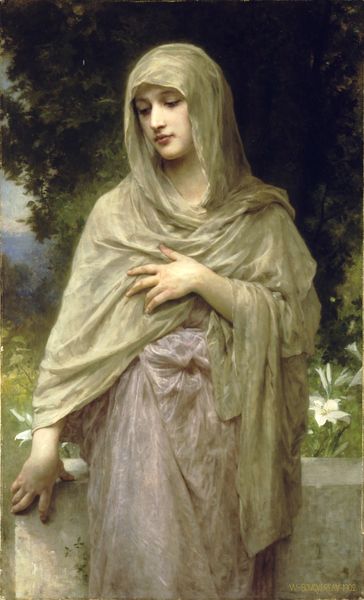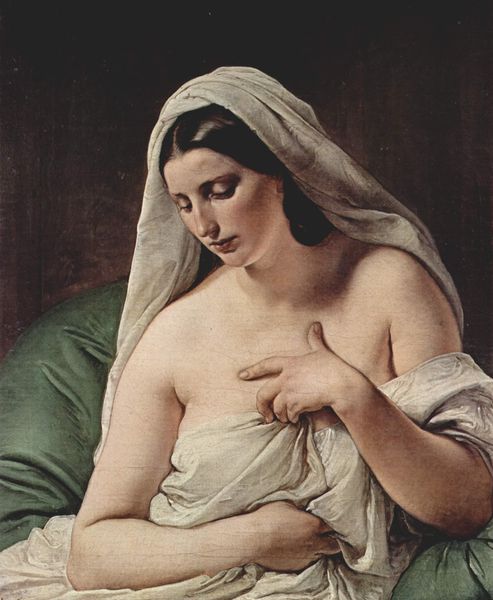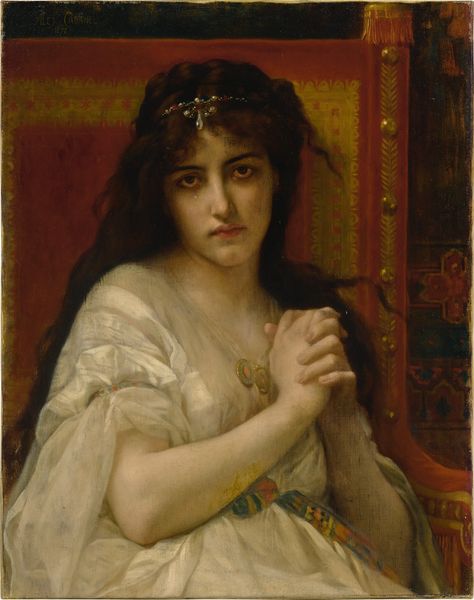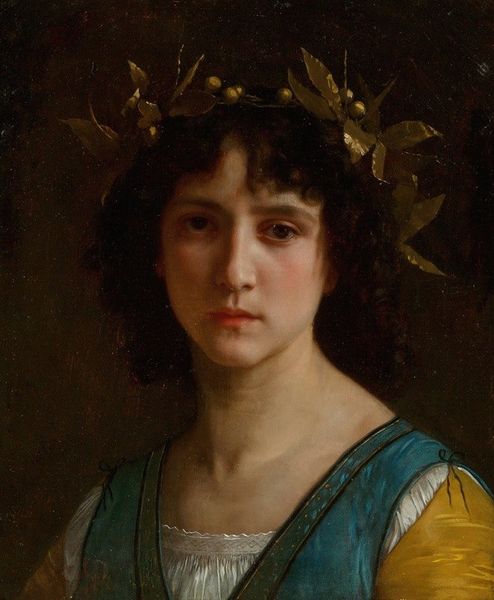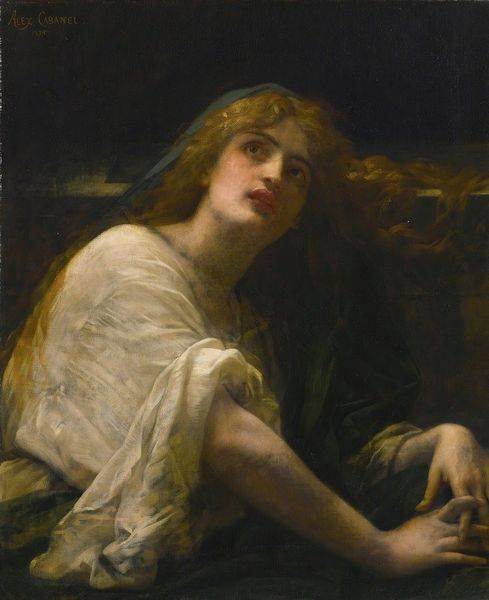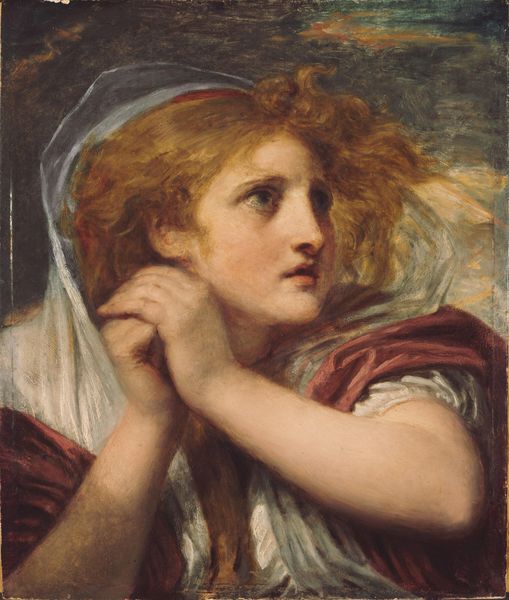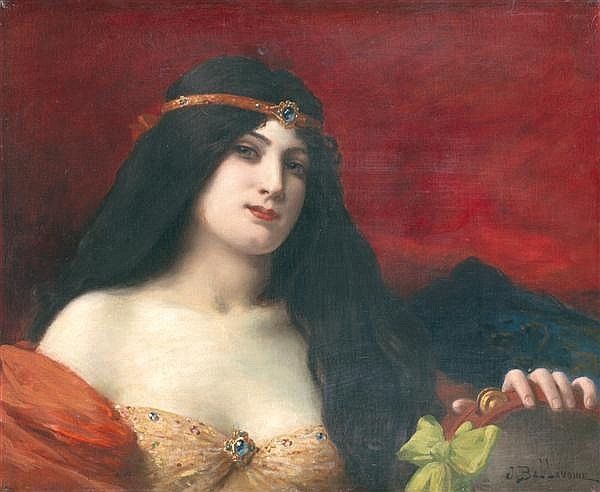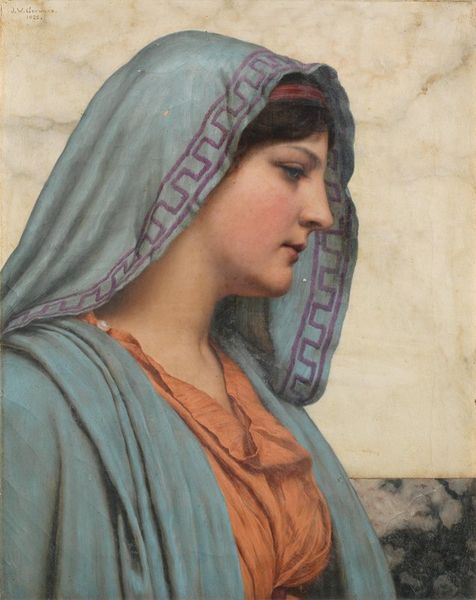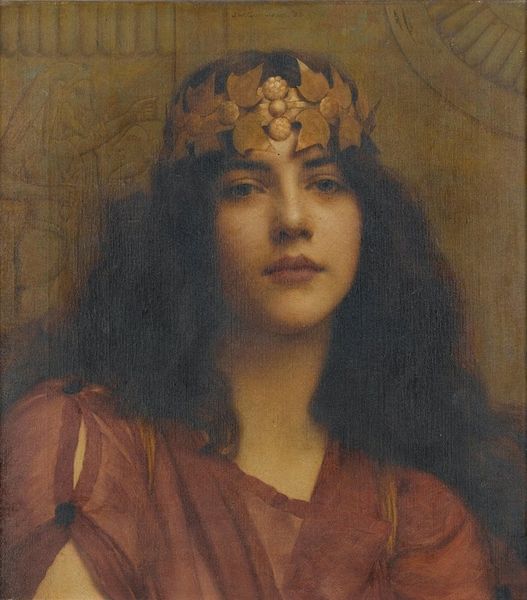
Copyright: Public Domain: Artvee
Curator: Anselm Feuerbach painted "Nanna as a Bacchante" in 1861, employing oil paint in what is a remarkable portrait. What are your first thoughts on seeing it? Editor: The mood is incredibly subdued. Even with the Bacchante title, it feels much more melancholic than celebratory, almost like a quiet introspection rather than Dionysian frenzy. Curator: Precisely. Feuerbach's historicist leanings often tempered his more overtly romantic impulses. Bacchantes are typically associated with wild revelry, yet here she’s depicted with a remarkable sense of restraint, reflecting the mid-19th-century academic ideals shaping his art. Editor: I see how her almost somber expression complicates the image. The red tones throughout—in her wrap, necklace, and even the backdrop—hint at passion but are ultimately held in check by her posture and gaze. Do you see it playing into the romanticizing of the suffering woman, or an introspective agency here? Curator: It’s a fascinating tension. The trappings are classical, certainly. The vine leaves in her hair and loose garment position her in this ancient lineage, aligning the picture with Romanticism. Yet the almost photographic realism Feuerbach brings to the model is undeniable, especially if we study his other contemporary portraits. It does something to destabilize easy categorization and reassert a subtle form of individual presence. Editor: It challenges our assumptions. The gaze averted feels intentional. She embodies a power that isn’t performative or outwardly expressed, but instead is more personal and potentially radical. She possesses, rather than enacts, this role, forcing a reflection of Bacchantes beyond the standard tropes that focus on male agency. Curator: Indeed, placing it in Feuerbach’s wider career, we can appreciate that this form of understated expression offers a deliberate reimagining of conventional femininity. He was trying, I think, to invest his subject with more dignity and interiority. Editor: Thinking about these power dynamics now definitely changes how I view this "Bacchante," transforming it from passive to self-possessed. It is a nuanced, and possibly challenging, reading that truly transforms the piece.
Comments
No comments
Be the first to comment and join the conversation on the ultimate creative platform.
